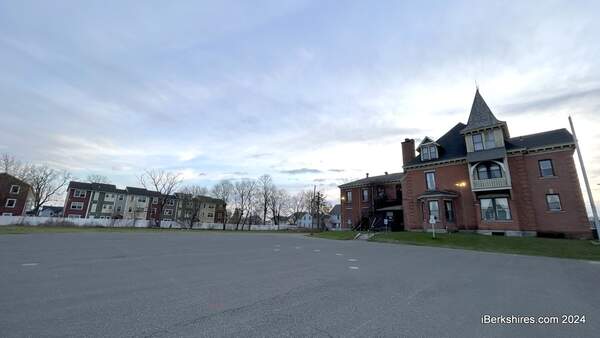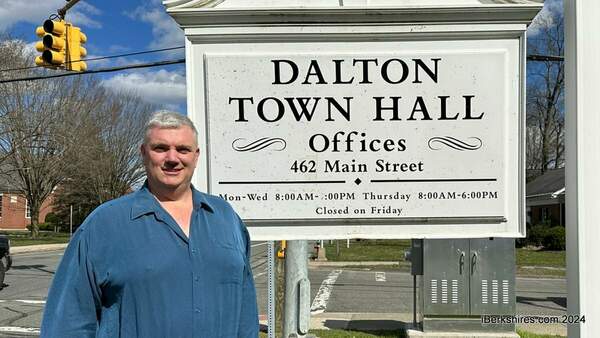Berkshire Employment Board Sets 2013 Workforce Goals
|
The Berkshire County Regional Employment Board lowered its performance goals in face of workforce and unemployment challenges. |
PITTSFIELD, Mass. — While recent initiatives have demonstrated some success, local employment authorities struggle to match job seekers with occupational needs amidst a still shaky economy.
One that's facing income reductions as federal unemployment extensions run out later this month.
Reviewing its 2013 Workforce Development Strategy, the Berkshire County Regional Employment Board voted to allow Executive Director Heather Boulger to negotiate lower performance goals than those recommended by the state for workers engaged in services with its offshoot Berkshire Works.
Proposed changes include reducing the percentage of job placement for dislocated workers [those who have been laid off from downsizing] from 85 to 78 percent, employment retention rate from 95 to 88 percent, and the six-month average earning figure from $20,000 to $17,500.
Boulger said the reasoning behind the lowered performance recommendations by Berkshire Works is that the region, which at only 1.8 percent of the population is the state's smallest labor market, has historically faced great challenges overcoming bad economic times.
"Our wages are always below the state average, we always have a hard time recovering from a recession, and that's where we are right now," Boulger told the board on Thursday. "So I think these recommendations are much more realistic than what the state is proposing."
"We have very unique needs here in the Berkshires," said Boulger, "And I think this is what we need in order to be successful."
Berkshire Works Director John Barrett III outlined the unemployment insurance losses facing Berkshire County residents, along with others out of work throughout the state and elsewhere at the end of this month, if Congress does not renew the current extension program for federal emergency unemployment benefits. Barrett said letters were mailed Monday to inform those whose benefits would be expiring earlier than expected.
Following Dec. 29, a Massachusetts job seeker who would once have had the possibility of up to 90 weeks of unemployment insurance, and currently may qualify for up to 54, will now be limited to a maximum period of 30 weeks.
"A lot of people are not going to get very nice Christmas presents," said Barrett. "That's not good news at all, and it's going to have a negative impact not only on those people but also on the local economy."
Barrett said unemployment rates in Pittsfield and North Adams are currently above the state average by about half a percent.
"There's not a lot of job creation out there right now," Barrett said.
One exception highlighted was the announcement Thursday of the results of the grant-funded Northern Tier Energy Sector Partnership program, a 28-month green jobs training initiative in collaboration with several schools and businesses in the region.
Out of 46 total participants all but 6, or about 87 percent, found jobs or advancement in their jobs, according to BCREB. Thirteen received wage gains, and 93 percent of participants received industry-recognized credentials as part of their training.
|
|||||||||||||||||||||||
"Berkshire County is fortunate that we have a proactive workforce system which has been working closely with our higher-education institutions for years and has developed a number of innovative partnerships like this one to help address the middle skills gap," said Mayor Daniel Bianchi in an announcement Thursday. "These efforts are helping people obtain the skills necessary to find employment."
With help from business leaders in the field, educators at McCann Technical School in North Adams and Berkshire Community College developed seven training programs. The photovoltaic courses offered were developed using learning objectives laid out by the North American Board of Certified Energy Practitioners (NABCEP).
"The Berkshire County Regional Employment Board continues to strengthen pathways for new and incumbent workers in Berkshire County by aligning public postsecondary education with the skills of employers, especially at the community college level," said Albert A. Ingegni III, president of BCREB. "Given the aging workforce and the increasing skill levels required in the Berkshires, it is critical that we continue to focus on building education and career pathways for residents and workers that support them in advancing into middle and high skill jobs."
Berkshire Works also trumpeted its OJT Training program, wherein employers can be reimbursed for wages paid to an employee while he or she is being trained on a new skill set on the job. Ninety-five percent of people who signed up for the program entered employment, according to Berkshire Works Career Counselor Shelley Iccardi, and 78 percent stayed with the employer with whom they underwent OJT training.
Michael Filpi, who manages the Laborer's Local 473, brought up concerns about the future of high school vocational education raised at last week's School Committee meeting, in light of the ongoing development of a plan for a new high school.
"I think there's some concern among the labor people and business community that we, as the leaders of what we do need to push, to the School Building Needs Committee and the administration, what we need going forward," Philpi told the board. "We've got to make sure that what we all need as employers and tradespeople goes into that new vocational/technical school."
"The efforts of the Berkshire Compact have really made some strong movements for careers in the STEM category (Science, Technology, Engineering & Math)," answered Boulger, "Maybe we need to focus a little more on Pittsfield's trade needs as well."
Tags: BCREB, jobs, unemployment, workforce training,

















